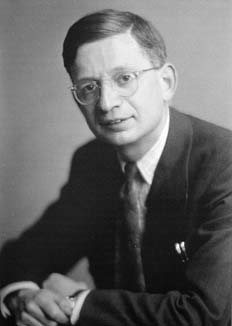Sir Rudolf Peierls (1907-1995) was a German-born British physicist.
In March 1940, Peierls and fellow collegue Otto Frisch co-authored the Frisch-Peierls memorandum, the first technical exposition of a practical atomic weapon. The memorandum included new calculations about the size and critical mass needed for an atomic bomb and the report helped ignite interest in the development of atomic weapons.
Following the signing of the Quebec Agreement in August 1943, Peierls joined the Manhattan Project as a member of the British team. Peierls was initially located in New York before being transferred to Los Alamos to work on the bomb.
Peierls was also responsible for the recruitment of Klaus Fuchs, a Soviet spy who work in the theoretical physics division at Los Alamos.





